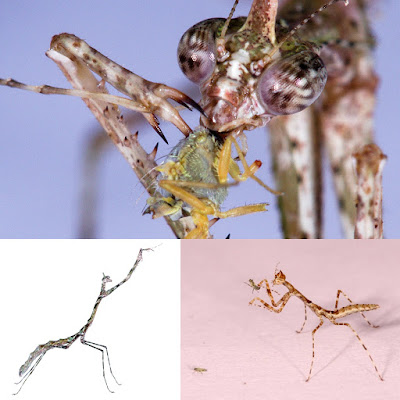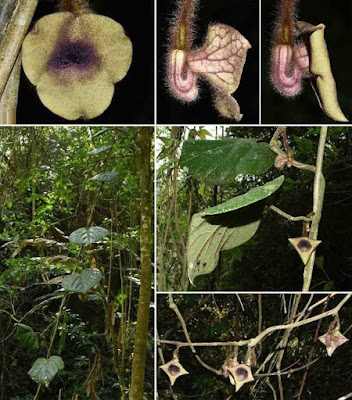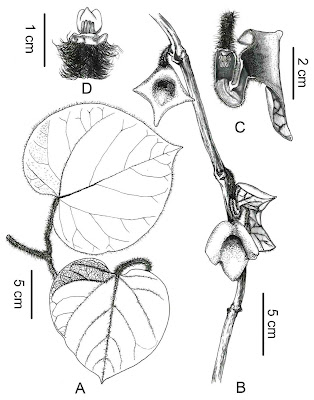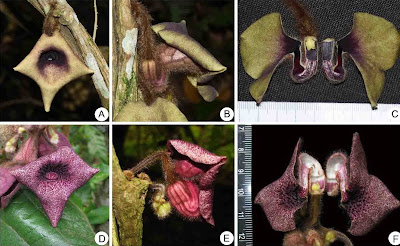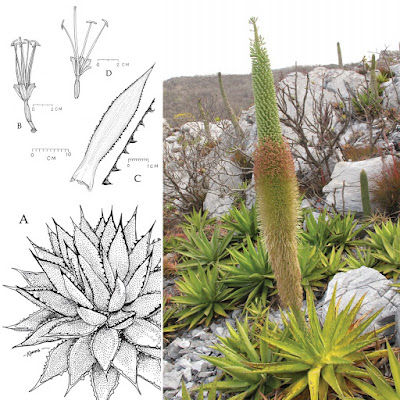[Most Recent Entries] [Calendar View]
Thursday, January 9th, 2020
| Time | Event | ||||
| 3:11a | [Entomology • 2020] Carrikerella simpira • A New Species of Praying Mantis from Peru Reveals Impaling as a Novel Hunting Strategy in Mantodea (Thespidae: Thespini)
Abstract A new species of lichen-mimicking praying mantis, Carrikerella simpira n. sp., is described from Tingo María region in Peru. The new species differs from its congeners in having reduced tergal lobes, a relatively sinuous pronotum, and it is found in the highland tropical rainforest of the Central Andes. Behavioral observations conducted on captive individuals revealed that juveniles and adults hunt by impaling prey using modified foretibial structures. Anatomical examinations of the incumbent trophic structures revealed functional adaptations for prey impaling in the foretibiae, primarily consisting of prominent, forwardly oriented, barbed spines. We provide an overall description of this novel hunting behavior in Mantodea and hypothesize on its evolutionary origin and adaptive significance for the Thespidae. Keywords: Heterochrony, mimicry, behavior, 3D printing, Carrikerella
Carrikerella simpira Rivera & Callohuari sp. nov. Etymology: The specific epithet refers to the “simpira,” a horned, mythological amazonian entity. According to local shipibo-conibo cosmovision, the simpira can stretch one of its arms to snare its victims, a behavior that evokes that of Carrikerella. J. Rivera and Y. Callohuari. 2020. A New Species of Praying Mantis from Peru Reveals Impaling as a Novel Hunting Strategy in Mantodea (Thespidae: Thespini). Neotropical Entomology. DOI: 10.1007/s13744-019-00744-y New Species of Praying Mantis Impales Its Prey on Barbed Spikes gizmodo.com/new-species-of-praying-manti | ||||
| 10:36a | [Botany • 2020] Aristolochia wenshanensis (Aristolochiaceae) • A New Species from Karst Region in southeastern Yunnan, China
Abstract Aristolochia wenshanensis Lei Cai, D.M.He & Z.L.Dao, a new species of Aristolochiaceae from southeastern Yunnan, China, is described and illustrated. The new species is morphologically most similar to A. mulunensis Y.S.Huang & Yan Liu in the shape of the leaf blade and perianth, but it can be easily distinguished by structure and color of the flower, shape of leaf blade base, especially the perianth shape, colour and texture. According to morphology the new species belongs to Aristolochia subgenus Siphisia. We also provide a table and notes to distinguish several other morphologically similar Aristolochia species. Keyword: Aristolochiaceae, Aristolochia wenshanensis, China, new taxa, karst region, flora of Yunnan Aristolochia wenshanensis Lei Cai, D.M.He & Z.L.Dao, sp. nov. 文山馬兜鈴 Diagnosis: Aristolochia wenshanensis resembles A. mulunensis in the shape of the leaf blade and perianth, but can be easily distinguished from the latter by the unconspicuous bracteole; perianth outside pale red with purple veins, densely rusty-villous; basal utricle inside purple black, ca. 8 mm in diam., lower tube purple with white patches, densely pubescent, ca. 6 mm in diam., upper tube, inside purple; limb subrotundate-peltate, lobes yellowish brown with tiny papillae, forming a wide campanulate limb in the center, ca. 1.8 cm in diam. Etymology: The specific epithet ‘wenshanensis’ refers to the type locality where the new species was found, Wenshan City, Yunnan Province, China. Distribution and Ecology: Aristolochia wenshanensis is currently known from the type locality in karst region with two populations and 6 individuals; it is also distributed in Gejiu City, Honghe Hani and Yi Autonomous Prefecture after consulting other scholars (pers. communication, Meng-Qi Han, Institute of Botany, Chinese Academy of Sciences). The species grows on shaded slopes of karst landform under the evergreen broad-leaved forests and climbs on other woody plants. Lei Cai, De-Ming He, Yu-Song Huang and Zhi-Ling Dao. 2020. Aristolochia wenshanensis, A New Species of Aristolochiaceae from Karst Region in southeastern Yunnan, China. Taiwania. 65(1); 41-46. DOI: 10.6165/tai.2020.65.41 | ||||
| 10:43a | [Botany • 2020] Agave calciphila (Asparagaceae, Agavoideae) • A New Agave Species from southern Oaxaca, Mexico Abstract A new species, Agave calciphila, endemic to the limestone hills north of Nizanda, Oaxaca, Mexico, is described. Its vegetative and flower morphology place this species in the section Heteracanthae, and close to Agave angustiarum, A. ghiesbreghtii, and A. huehueteca. After a comparison with these three species, A. calciphila was found to have shorter sterile peduncle and flowers. Keywords: Agave sect. Heteracanthae, MacDougall, Marginatae group, Nizanda
Agave calciphila G.Starr, sp. nov. Diagnosis:— Similar to Agave ghiesbreghtii and A. huehueteca but differs from both in having an extremely short sterile peduncle on the inflorescence (0–15 % of the total length vs. 50–70 % of the total length); a shorter overall flower length (34–42 mm vs. 50 mm and 40–45 mm, respectively); and a shorter flower tube (1 mm vs. 2–4 (10) mm and 5 mm, respectively). Etymology:— The species name means “limestone loving” and describes the preference these plants have for growing on limestone. Distribution:— Agave calciphila is restricted to the limestone outcrops north of Nizanda on the Isthmus of Tehuantepec in southern Oaxaca. Greg D. Starr. 2020. A New Agave Species (Asparagaceae, Agavoideae), from southern Oaxaca, Mexico. Phytotaxa. 428(2); 73–80. DOI: 10.11646/phytotaxa.428.2.1 |
| << Previous Day |
2020/01/09 [Calendar] |
Next Day >> |
